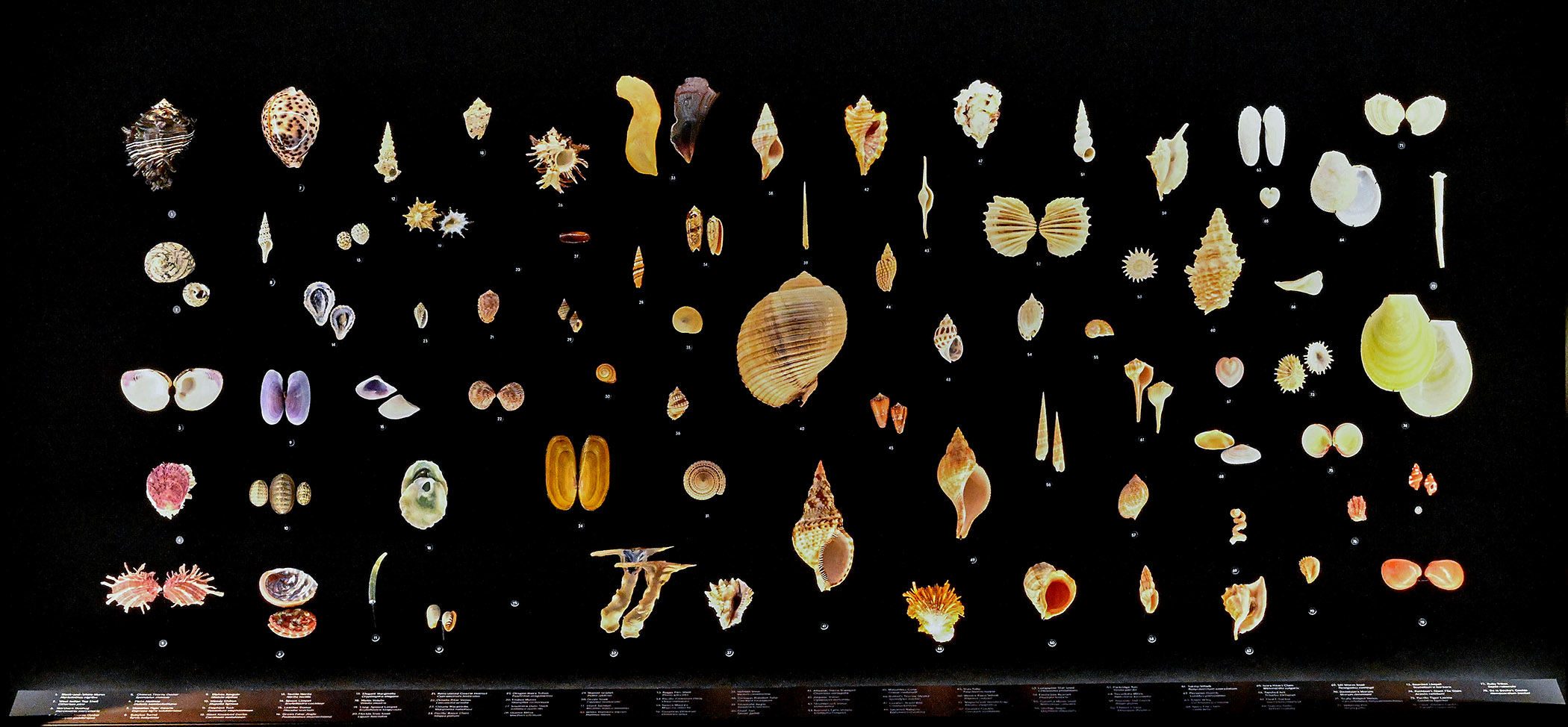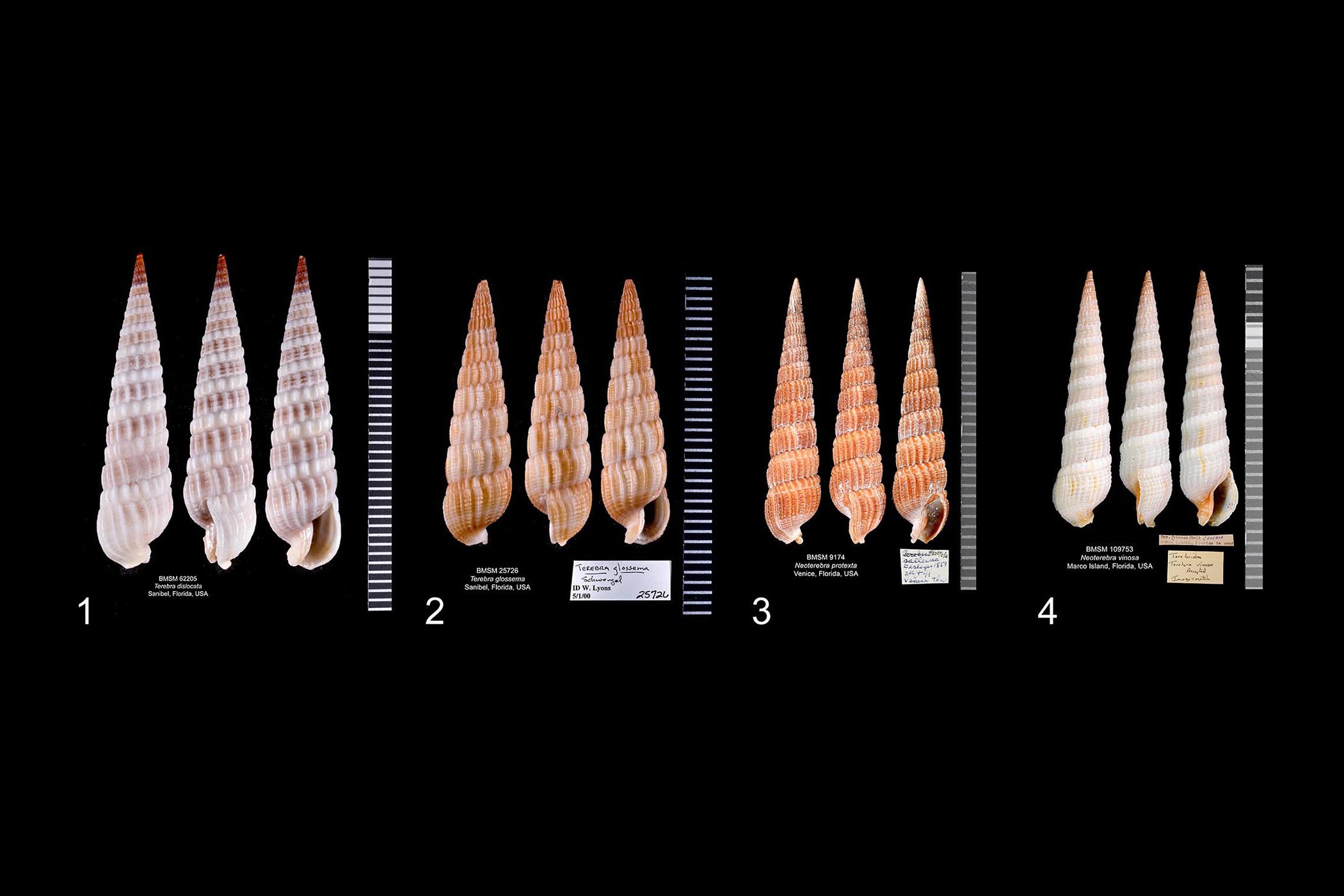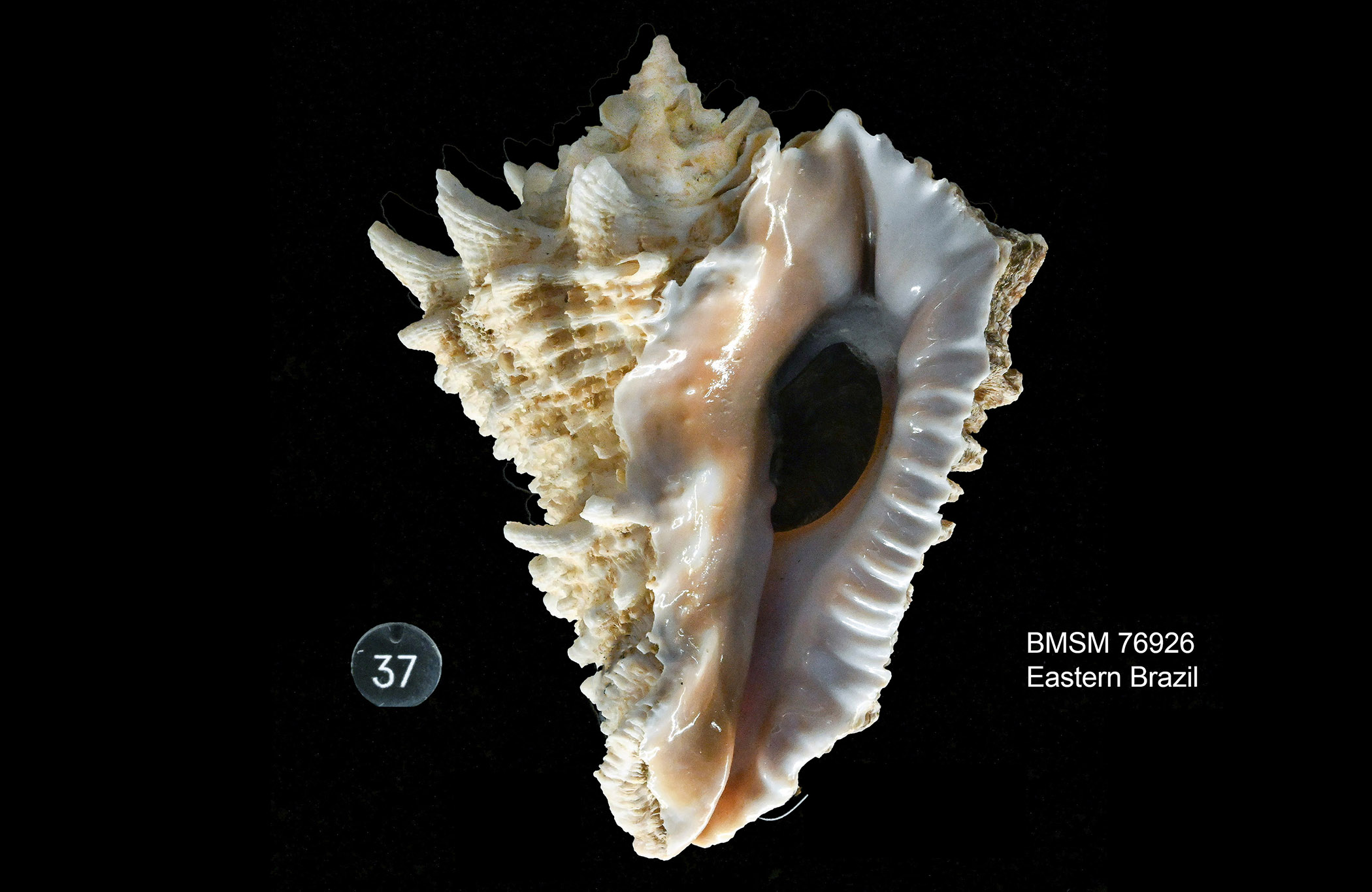In 2019, I reported on the great work on the eyes of scallops done by Daniel Speiser and his team at the University of South Carolina. Among other finds, Speiser and his collaborators have shown that scallops can narrow their eye pupils upon exposure to light, and that the blue eye color of Bay Scallops and other scallops is produced by blue nanospheres that may help increase vision contrast. Scallops have a visual system of dozens of eyes distributed almost along the entire periphery of their shell; the eyes are interspersed with sensory tentacles.
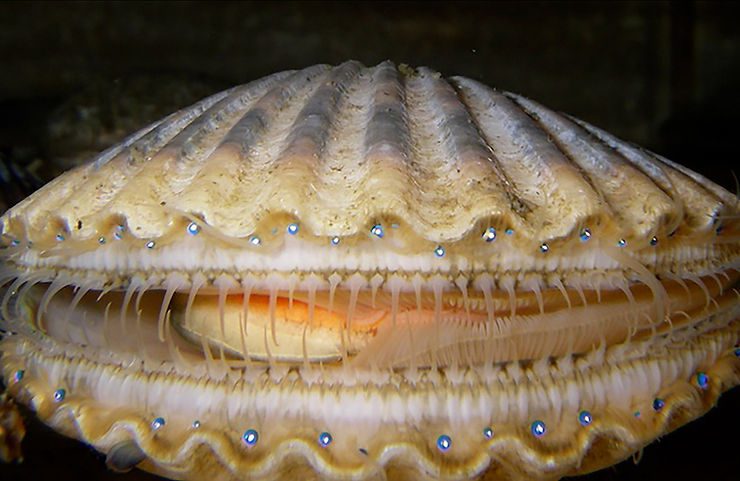 Argopecten irradians, its small blue eyes and tentacles. Photo Wikipedia Public Domain.
Argopecten irradians, its small blue eyes and tentacles. Photo Wikipedia Public Domain.
In a more recent article, Daniel Chappel, Tyler M. Horan, and Speiser have shown that Bay Scallops can follow visual cues, converting those cues into extension of their sensory tentacles, indicating that a scallop can perceive where an object is in relation to its own body. In the most striking of their experiments, Chappel and his collaborators have shown that Bay Scallops instantaneously extend their tentacles to track visual stimuli that rotate around them. These rotating waves of tentacle extension indicate that Bay Scallops have panoramic spatial vision: without moving their bodies, these mollusks can locate visual cues around at least ¾ of their circular perimeter.
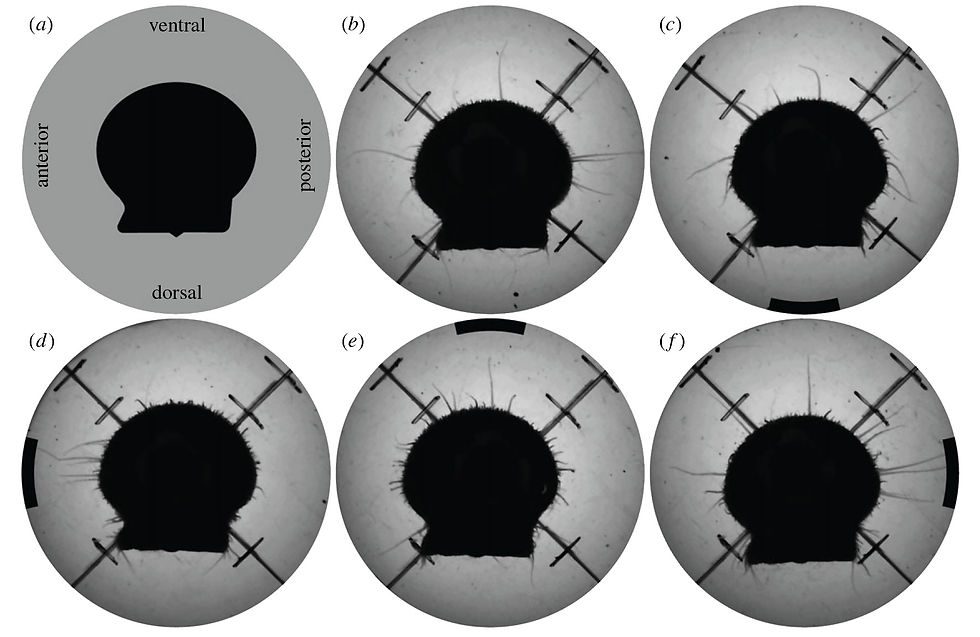 A Bay Scallop extending its sensory tentacles in response to black stripes presented at different locations around its body. (a) shows the body axes, (b) is a control (nothing is happening). (Figure 2 in Chappell, Horan, Speiser, 2021.)
A Bay Scallop extending its sensory tentacles in response to black stripes presented at different locations around its body. (a) shows the body axes, (b) is a control (nothing is happening). (Figure 2 in Chappell, Horan, Speiser, 2021.)
The authors propose that scallops use their eyes and sensory tentacles together for detecting and identifying potential predators. This two-step arrangement uses spatial vision for long-range predator detection, and deployment of sensory tentacles for short range predator identification. “We’ve known for a while now that scallops can use their eyes to detect objects,” Dan Speiser said, “but we’ve only just learned that scallops know the locations of these objects. Locating objects takes more processing power than simply detecting them, so the next step for us is learning how scallops are integrating visual information from all of their many eyes.” Check a cool video of one of their experiments here.
#argopectengibbus #bayscallop #pectinidae #scallopeyes #scalloptentacles #visualstimuli
